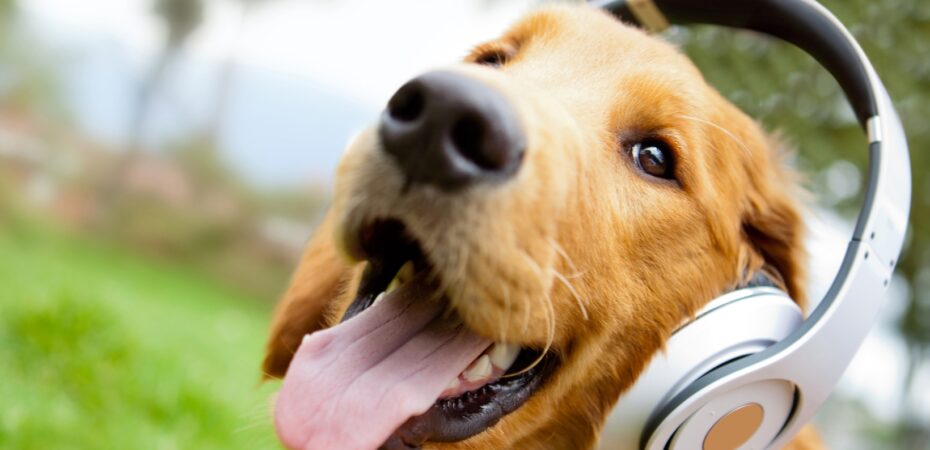When dogs go deaf, it can be a disorienting experience for them. As their hearing gradually fades away, they may start to wonder why everyone around them suddenly stopped talking. It’s natural for us humans to assume that our canine companions would think this way, as communication through sound is such an integral part of our lives. But do dogs really perceive their deafness in the same way we do?
Understanding how dogs experience deafness requires us to delve into their unique sensory world. While hearing loss certainly affects their ability to comprehend spoken language, dogs primarily rely on other senses like smell and body language to communicate and gather information from their surroundings. Their acute sense of smell allows them to pick up on subtle cues and scents that are imperceptible to us.
Understanding Canine Deafness
Dealing with a dog’s hearing loss can be a challenging and emotional experience for both the pet owner and the dog itself. As we explore the topic of canine deafness, we hope to shed light on some key aspects that will help you better understand this condition and how to communicate effectively with your furry friend.
Causes of Canine Deafness
There are several factors that can contribute to a dog losing its hearing abilities. Some common causes include:
- Congenital Deafness: Certain breeds, such as Dalmatians and Australian Shepherds, are more prone to being born deaf due to genetic inheritance.
- Age-related Hearing Loss: Just like humans, dogs can experience age-related hearing loss as they get older.
- Infections or Diseases: Infections in the ear or diseases affecting the auditory system can lead to temporary or permanent deafness.
- Trauma or Injury: Severe head trauma or exposure to loud noises over an extended period can damage a dog’s hearing.
Understanding the underlying cause of your dog’s deafness is crucial in determining appropriate treatment options and providing the necessary support.
Communicating with a Deaf Dog
While deafness can pose challenges in communication, there are various techniques and tools that can help bridge the gap between you and your furry companion:
- Visual Cues: Incorporate hand signals or specific gestures into your training routine to replace verbal commands.
- Vibrations: Utilize vibrations, such as tapping on the floor or using specialized devices like vibrating collars, to get your dog’s attention.
- Positive Reinforcement: Reward-based training methods can be highly effective in teaching new commands and behaviors.
- Routine Maintenance: Regularly check your dog’s ears for any signs of infection or irritation that might further impact their hearing.
Remember that patience, understanding, and consistency are key when working with a deaf dog. With time and effort, you’ll find alternative ways to communicate effectively and maintain a strong bond with your beloved pet.

When Dogs Go Deaf, Do They Think Everyone Stopped Talking to Them
When dogs go deaf, it can be a confusing and isolating experience for them. They may wonder why everyone suddenly stopped talking to them or why they can no longer hear the familiar sounds around them. As responsible pet owners, it is our duty to help our deaf dogs maintain a healthy lifestyle and ensure that they still feel connected to us and their environment.
Here are some tips for maintaining a healthy lifestyle for deaf dogs:
- Visual cues: Since deaf dogs rely heavily on visual cues, it’s important to use hand signals and body language to communicate with them. Teach your dog basic commands using clear gestures that they can easily understand. Consistency is key, so make sure everyone in the household uses the same signals.
- Environmental adaptations: Make changes in your home environment to accommodate your deaf dog’s needs. Consider using visual cues like flashing lights or vibrating collars as alternative methods of communication. Secure fences properly and keep doors closed to prevent your dog from wandering off unnoticed.
- Mental stimulation: Engage your deaf dog’s mind with interactive toys, puzzle games, and training exercises that focus on visual cues rather than verbal commands. This will help keep their minds sharp and prevent boredom.
- Physical exercise: Regular exercise is important for all dogs, including those who are deaf. Take your furry friend on walks or engage in other physical activities that allow them to burn off energy while strengthening the bond between you both.
- Training and socialization: Enroll your deaf dog in positive reinforcement-based training classes specifically designed for hearing-impaired dogs. These classes not only provide valuable training but also offer opportunities for socialization with other dogs in a controlled environment.
Remember, patience and understanding are key when caring for a deaf dog. Be mindful of their unique needs and always provide love, support, and guidance throughout their journey towards adapting to life without hearing.


 By
By 




